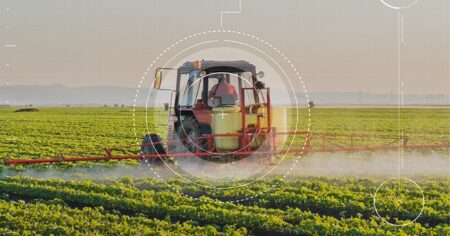Easter and Passover are approaching, but those planning to dye eggs for celebrations may be shocked by ever soaring egg prices. In 2025, egg prices have reached record highs, rising over 350 percent compared to the previous year. The combination of inflation and highly pathogenic avian influenza has driven costs up, with some restaurants adjusting menu prices to keep up.
According to the American Farm Bureau Federation, the surge in egg prices stems from two major factors: a reduced supply due to HPAI outbreaks and the broader impact of inflation on farm production.
Eggs are an inelastic good, meaning demand remains steady even as prices increase. Because eggs have few direct substitutes in baking and cooking, consumers continue purchasing them despite cost hikes. This steady demand places greater pressure on supply shortages, which have been exacerbated by HPAI.
Since 2022, the disease has affected more than 166 million birds, including 127 million egg layers. This has resulted in a consistent annual loss of about 11 percent of the national laying flock. By early 2025, more than 35 million birds had been impacted, further reducing egg supplies and pushing prices higher. In March 2025, the daily national average price for a dozen large eggs hit $8.15.
Unlike previous avian influenza outbreaks, this virus has not disappeared with seasonal changes. It has continued circulating in wild bird populations and domestic flocks, making containment more difficult. Additionally, the rise of backyard poultry flocks has created more opportunities for the virus to spread. Unlike the 2014-15 outbreak, which saw the virus die off within a year, the current situation remains persistent and widespread.
Despite these challenges, the U.S. egg industry has shown remarkable resilience. The national laying hen inventory was 375 million in 2024, only 3.5 percent lower than pre-outbreak levels. Farmers have managed to maintain production levels despite losing an average of 11 percent of their flocks annually to HPAI. In 2024, table egg production reached 93.1 billion eggs — only a 2.6 percent decline from 2021 levels.
“Higher prices for eggs do not mean farmers are getting rich. On the contrary, these prices are a result of the farmer’s loss of millions of birds to disease,” writes the AFBF.

Higher egg prices do not translate to higher profits for farmers. The loss of entire flocks due to HPAI results in economic hardship, as it can take up to a year for affected farms to recover. The U.S. Department of Agriculture’s indemnity program provides compensation for lost birds, but it does not cover the financial strain of lost income during farm recovery.
“Depopulation of infected flocks is necessary to prevent further spread, but it remains a devastating experience for farm families. When HPAI is detected, the entire flock is de-populated, for several reasons,” reports the AFBF. “When HPAI is present in even one bird in a poultry house or barn, it typically spreads through the whole facility. Another reason is to prevent spillover into other houses on the premises or wild birds that could spread the virus which also leads to a greater risk for mutation.”
Inflation has further contributed to rising egg prices by increasing production costs. While inflation rates have slowed in recent years, prices continue to rise. From January 2024 to January 2025, egg prices increased by 53 percent, with a 13.8 percent jump in just two months. Rising costs for labor, fuel, and interest rates have made egg production more expensive. Additionally, the cost of replacing lost birds has climbed, as chick prices have surged alongside the demand for replacements.
Ultimately, the two primary drivers of record-breaking egg prices in 2025 are HPAI and inflation. The ongoing struggle with avian influenza has reduced the national egg supply, while persistent inflation keeps production costs elevated. Although consumers are paying higher prices at grocery stores, egg farmers continue to navigate significant economic challenges and production risks.


:max_bytes(150000):strip_icc()/6895915516_c5d91051e4_o-dcfd56ad94744fe7a21a73a4193bf43a.jpg)
:max_bytes(150000):strip_icc()/BloombergContributor-2213407471-950399016ccb4e73ab5886ad1d623b2e.jpg)





:max_bytes(150000):strip_icc()/For-Sale-Farmland-Natalina-Sents-Bausch-d53037fe10b24b288740b5a3089aa5c7.jpg)
:max_bytes(150000):strip_icc()/adm-1-ee7f0c8ca6d74828a32b170d601c90c5.jpg)
